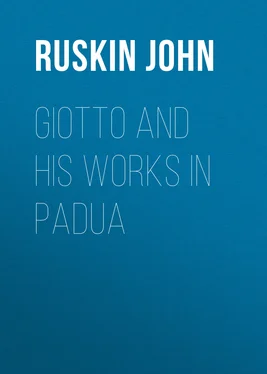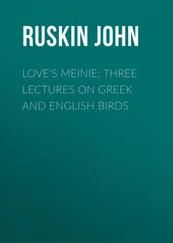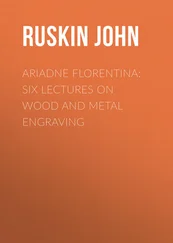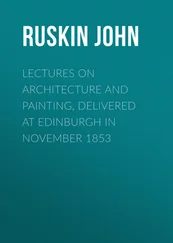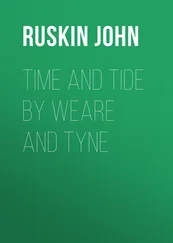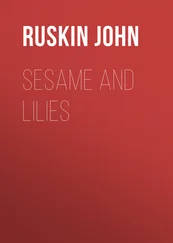As if to direct us to the observation of this great law, there is a curious visible type of it in the progress of ornamentation in manuscripts, corresponding with the various changes in the higher branch of art. In the course of the 12th and early 13th centuries, the ornamentation, though often full of high feeling and fantasy, is sternly enclosed within limiting border-lines;—at first, severe squares, oblongs, or triangles. As the grace of the ornamentation advances, these border-lines are softened and broken into various curves, and the inner design begins here and there to overpass them. Gradually this emergence becomes more constant, and the lines which thus escape throw themselves into curvatures expressive of the most exquisite concurrence of freedom with self-restraint. At length the restraint vanishes, the freedom changes consequently into license, and the page is covered with exuberant, irregular, and foolish extravagances of leafage and line.
Конец ознакомительного фрагмента.
Текст предоставлен ООО «ЛитРес».
Прочитайте эту книгу целиком, купив полную легальную версию на ЛитРес.
Безопасно оплатить книгу можно банковской картой Visa, MasterCard, Maestro, со счета мобильного телефона, с платежного терминала, в салоне МТС или Связной, через PayPal, WebMoney, Яндекс.Деньги, QIWI Кошелек, бонусными картами или другим удобным Вам способом.
"Noting the visages of some who lay
Beneath the pelting of that dolorous fire,
One of them all I knew not; but perceived
That pendent from his neck each bore a pouch,
With colours and with emblems various marked,
On which it seemed as if their eye did feed.
And when amongst them looking round I came,
A yellow purse I saw, with azure wrought,
That wore a lion's countenance and port.
Then, still my sight pursuing its career,
Another I beheld, than blood more red,
A goose display of whiter wing than curd.
And one who bore a fat and azure swinePictured on his white scrip, addressed me thus:
What dost thou in this deep? Go now and know,
Since yet thou livest, that my neighbour here,
Vitaliano, on my left shall sit.
A Paduan with these Florentines am I.
Ofttimes they thunder in mine ears, exclaiming,
Oh! haste that noble knight, he who the pouch
With the three goats will bring. This said, he writhed
The mouth, and lolled the tongue out, like an ox
That licks his nostrils."
Canto xvii.
This passage of Cary's Dante is not quite so clear as that translator's work usually is. "One of them all I knew not" is an awkward periphrasis for "I knew none of them." Dante's indignant expression of the effect of avarice in withering away distinctions of character, and the prophecy of Scrovegno, that his neighbor Vitaliano, then living, should soon be with him, to sit on his left hand, is rendered a little obscure by the transposition of the word "here." Cary has also been afraid of the excessive homeliness of Dante's imagery; "whiter wing than curd" being in the original "whiter than butter." The attachment of the purse to the neck, as a badge of shame, in the Inferno , is found before Dante's time; as, for instance, in the windows of Bourges cathedral (see Plate iii. of MM. Martin and Cahier's beautiful work). And the building of the Arena Chapel by the son, as a kind of atonement for the avarice of the father, is very characteristic of the period, in which the use of money for the building of churches was considered just as meritorious as its unjust accumulation was criminal. I have seen, in a MS. Church-service of the thirteenth century, an illumination representing Church-Consecration, illustrating the words, "Fundata est domus Domini supra verticem montium," surrounded for the purpose of contrast, by a grotesque, consisting of a picture of a miser's death-bed, a demon drawing his soul out of his mouth, while his attendants are searching in his chests for his treasures.
For these historical details I am chiefly indebted to the very careful treatise of Selvatico, Sulla Cappellina degli Scrovegni nell'Arena di Padova . Padua, 1836.
Lord Lindsay, Christian Art , vol. ii. p. 166.
At Pietra Mala. The flames rise two or three feet above the stony ground out of which they spring, white and fierce enough to be visible in the intense rays even of the morning sun.
At least Lord Lindsay seems to consider the evidence collected by Förster on this subject conclusive. Christian Art , vol. ii. p. 168.
It might not, I think, be a work unworthy of the Arundel Society, to collect and engrave in outline the complete series of these Byzantine originals of the subjects of the Arena Chapel, in order to facilitate this comparison. The Greek MSS. in the British Museum would, I think, be amply sufficient; the Harleian MS. numbered 1810 alone furnishing a considerable number of subjects, and especially a Death of the Virgin, with the St. John thrown into the peculiar and violent gesture of grief afterwards adopted by Giotto in the Entombment of the Arena Chapel.
Notes to Rogers' Italy .
These words are gravely added to some singular particulars respecting the life of Adam, related in a MS. of the sixteenth century preserved in the Herald's College.
